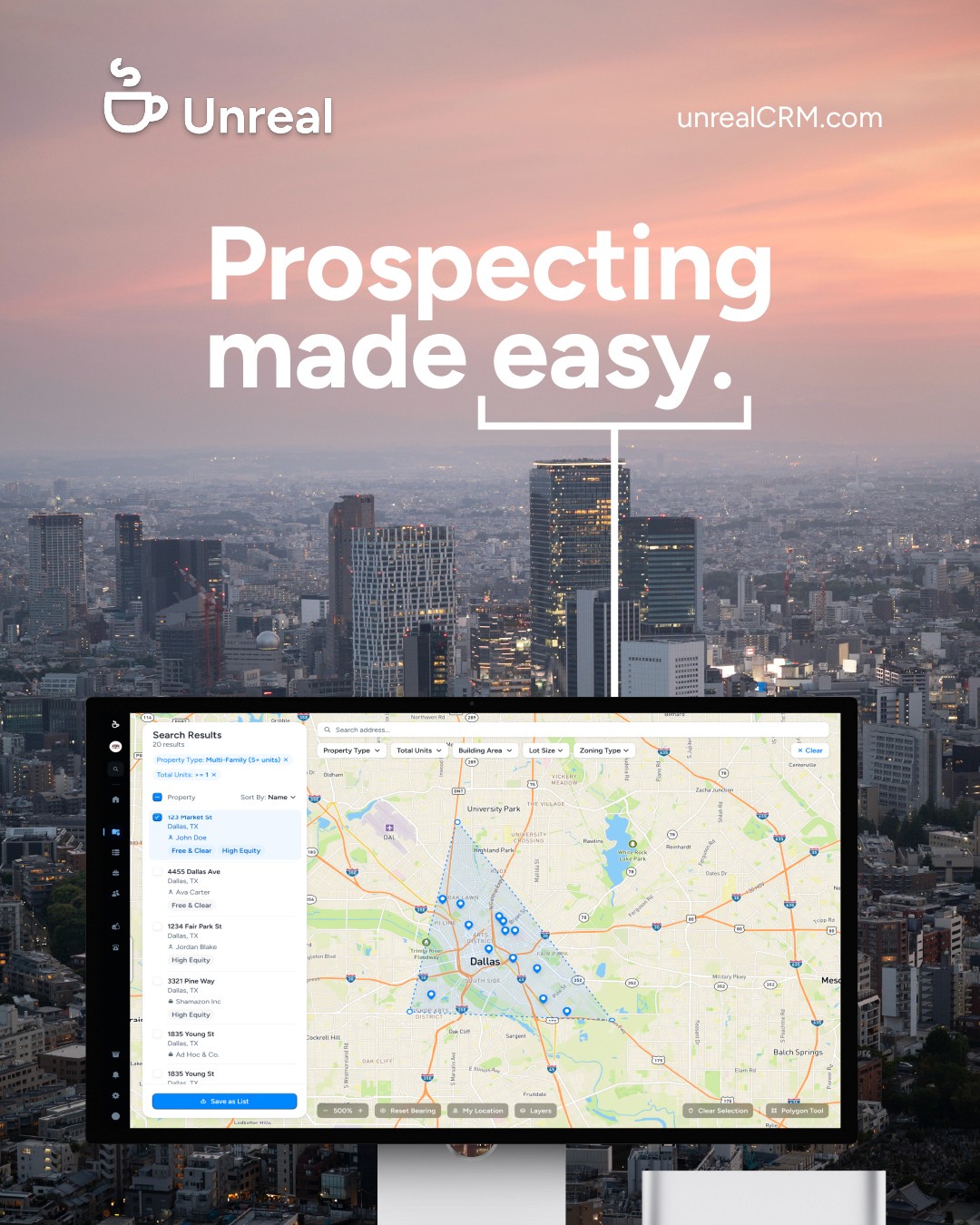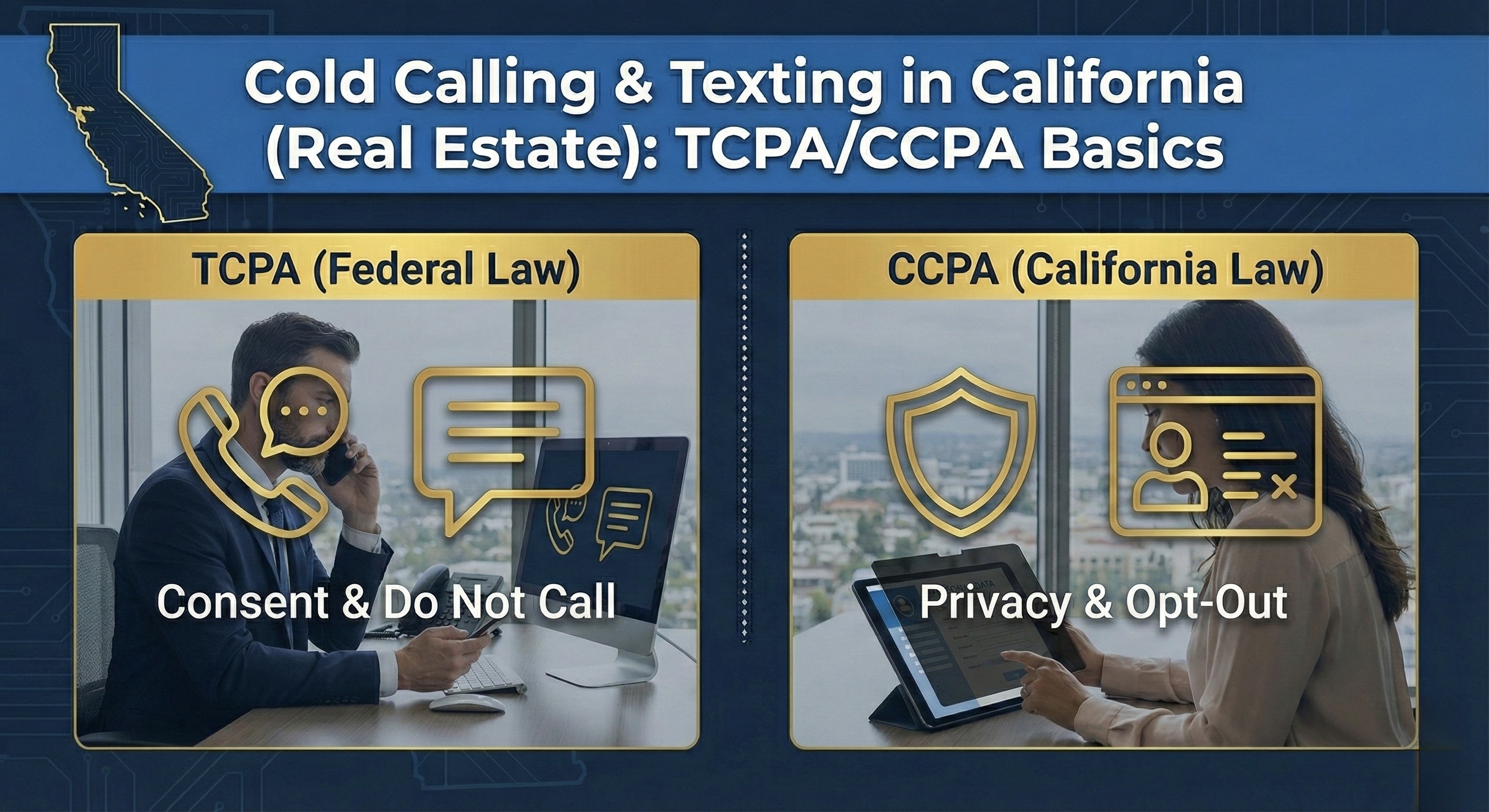Jul 14, 2025
Real estate professionals and property service providers send thousands of messages daily, yet most automated outreach feels robotic and generates minimal response. The challenge isn't automation itself—it's balancing efficiency with authenticity.
Consider this: The average real estate agent sends 50-100 prospecting messages per week. Property investors often triple that number. Yet response rates hover around 1-3% for most automated campaigns. The problem isn't volume—it's relevance.
This article explores how successful automated property outreach sequences balance personalization at scale with strategic lead qualification to generate meaningful connections that convert prospects into qualified leads without sacrificing authenticity. When done right, sales automation becomes a relationship-building tool that systematically improves your prospecting results.
Building Property-Specific Personalization Triggers
Generic outreach dies in the inbox. Property-specific personalization breathes life into automated sequences by transforming mass communication into relevant, engaging conversations using property data and owner information as personalization anchors.
Leverage Property Characteristics for Authentic Messaging
The most effective property outreach feels personal because it references specific, relevant details about the prospect's situation. Home age, recent sales activity, neighborhood trends, and property features serve as powerful personalization variables that drive 2-3x higher engagement rates compared to generic messaging.
Here's how this works in practice: Instead of "We buy houses in your area," try "I noticed your 1960s ranch on Maple Street backs up to the new development. Many homeowners in established neighborhoods like yours are curious about their property's current value given the recent changes."
The difference is specificity. The first message could apply to anyone. The second demonstrates you've actually looked at their property and understand their unique situation. This level of personalization at scale requires systematic data collection and smart automation, but the results justify the effort.
Property characteristics that drive engagement include:
Home age and style: "Your 1980s colonial is exactly what young families are seeking in today's market"
Lot size and features: "That corner lot gives you development options most neighbors don't have"
Recent neighborhood activity: "Three homes on your street have sold in the past six months"
Property condition indicators: "Well-maintained properties like yours are rare in this price range"
Use Owner Data Enrichment for Contextual Relevance
Property data tells you about the house. Owner data tells you about the person. Combining occupancy status, equity levels, and demographic information creates timely, relevant touchpoints that feel personal rather than mass-produced.
Effective lead qualification starts with understanding the prospect's situation. An absentee owner faces different challenges than someone who's lived in their home for 30 years. Your outreach should reflect these differences.
Consider these owner-specific personalization approaches:
For Long-Term Owners: "After 25 years in your Oakwood home, you've seen the neighborhood transform. Many longtime residents are surprised by their property's current value."
For Recent Purchasers: "Congratulations on your recent purchase on Pine Street. As a new homeowner in the area, you might be interested in our neighborhood market updates."
For Absentee Owners: "Managing a rental property from across town comes with unique challenges. Many investors in your situation find our property management services helpful."
The key is matching your message to their circumstances. This contextual relevance transforms cold outreach into warm conversation starters.
Create Dynamic Content Templates That Scale
Personalization at scale requires templates that adapt to different property types and owner situations while maintaining authenticity. Dynamic content templates allow you to create property-specific message variations that deliver 40-60% improvement over generic outreach.
Here's a framework for scalable personalization:
Template Structure:
Example Implementation:
Property Reference: "Your {property_type} on {street_name}"
Market Context: "With {recent_sales_count} recent sales in {neighborhood}"
Value Proposition: "Many {owner_type} are discovering {relevant_opportunity}"
Next Step: "Would a brief market analysis be helpful?"
This approach maintains the personal touch while enabling efficient scaling. Each message feels custom-written because it references specific details about the prospect's situation.
Real estate professionals using this approach report significant improvements in response rates and lead quality because prospects recognize the relevance immediately.
Designing Multi-Channel Sequences That Progress Through Sales Funnel
Effective property outreach isn't about sending one perfect message—it's about creating a series of touchpoints that build trust and guide prospects through qualification stages with strategic timing and progressive messaging.
Sequence Timing and Channel Selection Strategy
Successful prospecting sequences use multiple channels strategically, not randomly. Email, phone, and direct mail each serve different purposes in the qualification process.
Email works best for initial contact and information sharing. It's non-intrusive and allows prospects to engage on their timeline. Open rates for property-specific emails typically range from 25-35% when properly personalized.
Phone calls excel at qualifying serious prospects and handling objections. They're most effective as follow-up to email engagement, not as cold first contact. Call answer rates improve 40-50% when preceded by relevant email communication.
Direct mail cuts through digital noise and demonstrates serious intent. It's particularly effective for high-value properties or established neighborhoods where owners appreciate tangible communication.
Optimal Sequence Timing:
Day 1: Initial email with property-specific value proposition
Day 4: Follow-up email with additional market context
Day 7: Phone call referencing email communication
Day 14: Direct mail piece with neighborhood analysis
Day 21: Final email with time-sensitive opportunity
Day 28: Last phone call attempt
This spacing allows for natural engagement while maintaining consistent presence. The key is progression—each touchpoint should build on the previous one.
Progressive Messaging That Builds Relationships
Each touchpoint in your sequence should advance the conversation from initial awareness through interest to consideration stages. This requires strategic messaging that deepens engagement over time.
Touch 1 - Awareness: Introduce yourself and demonstrate knowledge of their property Touch 2 - Interest: Share relevant market insights that create curiosity Touch 3 - Consideration: Discuss specific opportunities or solutions Touch 4 - Evaluation: Provide detailed analysis or case studies Touch 5 - Decision: Present clear next steps with urgency
This progression feels natural because it mirrors how people actually make decisions. You're not pushing for immediate action—you're building a relationship that leads to qualified opportunities.
Case studies show that prospects who engage with 3+ touchpoints in a sequence are 5x more likely to convert than those who only see one message.
Integrated CRM Tracking Across Channels
Unified tracking across all channels reveals which touchpoints perform best for different property types and market segments. This data becomes crucial for optimizing your sequences over time.
Your CRM system should track:
Email engagement: Opens, clicks, forwards, replies
Phone interactions: Answer rates, conversation length, outcomes
Direct mail response: Inquiries, website visits, callbacks
Cross-channel behavior: Which combinations drive best results
This integrated approach shows you that luxury property owners might prefer phone calls after direct mail, while investor prospects respond better to email sequences with detailed market data.
Implementing Behavioral Triggers and Response Scoring
Not all prospects are created equal. Automated systems can identify and prioritize the most qualified prospects based on engagement patterns and responses using data-driven scoring methodologies.
Engagement-Based Scoring Frameworks
Behavioral indicators predict conversion better than demographic data alone. Email opens, link clicks, phone answer rates, and response timing patterns reveal genuine interest versus polite acknowledgment.
High-Value Behaviors (10-15 points each):
Replies to emails with questions
Clicks on property valuation links
Answers phone calls and engages in conversation
Requests additional information
Visits your website multiple times
Medium-Value Behaviors (5-10 points each):
Opens multiple emails in sequence
Clicks on general information links
Engages with social media content
Asks to be removed from specific lists (shows engagement)
Low-Value Behaviors (1-5 points each):
Single email opens
Brief website visits
Social media connections without engagement
Lead scoring frameworks that incorporate behavioral data improve qualification accuracy by 60-80% compared to basic demographic scoring.
Automated Qualification Rules and Triggers
Smart automation rules optimize follow-up timing based on prospect behavior and property characteristics. These rules ensure hot prospects receive immediate attention while nurturing cooler leads systematically.
Immediate Action Triggers:
Prospect replies with timeline questions
Multiple touchpoints engaged within 24 hours
Phone call answered with 2+ minute conversation
Website form completion
Accelerated Sequence Triggers:
Email opened within 1 hour of sending
Property valuation link clicked
Referral from engaged prospect
Social media engagement spike
Nurture Sequence Triggers:
Single email opens with no clicks
Brief website visits
Social media connections
Neutral phone conversations
These automated qualification rules ensure that your most promising prospects receive timely, relevant follow-up while maintaining systematic contact with longer-term opportunities.
Integration with Property Data for Enhanced Scoring
Property value, market conditions, and owner characteristics enhance lead scoring accuracy and priority ranking. A motivated seller with a $500,000 property deserves different treatment than a curious homeowner with a $150,000 house.
Property-Enhanced Scoring Factors:
Property value: Higher values increase potential commission/profit
Market conditions: Hot markets accelerate scoring
Owner equity: Higher equity suggests more flexibility
Time owned: Different motivations at different stages
Property condition: Affects marketing approach and timeline
This integrated approach helps you focus energy on prospects most likely to convert into profitable transactions.
Creating Feedback Loops for Continuous Improvement
The most successful automated outreach systems continuously evolve based on real performance data. Regular analysis, A/B testing, and refinement increase conversion rates over time.
Key Performance Indicators and Measurement Frameworks
Effective measurement requires tracking the right metrics at each stage of your sequence. Response rates matter, but conversion rates matter more.
Primary Metrics:
Response Rate: Percentage of prospects who engage with any touchpoint
Qualification Rate: Percentage of responders who meet your criteria
Conversion Rate: Percentage of qualified leads who become clients
Time to Conversion: Average days from first contact to closed deal
ROI by Segment: Profitability across different property types
Secondary Metrics:
Channel Performance: Which touchpoints drive best results
Message Effectiveness: Response rates by content type
Timing Optimization: Best days/times for each channel
Sequence Completion: How many prospects engage with multiple touchpoints
These metrics reveal what's working and what needs improvement. Track them monthly and adjust your approach based on trends.
A/B Testing Strategies for Optimization
Systematic testing improves every element of your outreach sequences. Subject lines, messaging, timing, and channel selection all benefit from structured experimentation.
High-Impact Testing Areas:
Subject Lines: Test personalized vs. generic, question vs. statement, urgency vs. curiosity
"Your Maple Street property analysis" vs. "Free market analysis available"
"Question about your rental property" vs. "Rental property opportunities"
Message Tone: Test professional vs. conversational, direct vs. indirect
"I'd like to discuss purchasing your property" vs. "I'm curious about your future plans for your Pine Street home"
Timing: Test different days, times, and sequence spacing
Tuesday vs. Thursday sends
9 AM vs. 2 PM vs. 6 PM
3-day vs. 7-day intervals
Channel Order: Test email-first vs. mail-first vs. phone-first approaches
A/B testing frameworks show that consistent testing improves response rates by 15-25% over 6-month periods.
Analytics-Driven Refinement Across Market Segments
Performance data reveals which approaches work best for different property types, price ranges, and geographic markets. This segmentation allows for increasingly targeted and effective outreach.
Segment-Specific Insights:
Luxury Properties: Longer sequences with more touches, prefer phone and direct mail, respond to exclusivity messaging
Investment Properties: Shorter sequences with data-heavy content, prefer email with detailed analytics, respond to ROI messaging
Starter Homes: Mixed sequences with educational content, prefer social media integration, respond to opportunity messaging
Distressed Properties: Immediate response sequences, prefer phone contact, respond to solution-focused messaging
This segmentation approach allows you to customize your automation for maximum effectiveness across different market segments.
Conclusion
Successful automated property outreach requires balancing efficiency with authenticity through strategic personalization, multi-channel progression, intelligent qualification, and continuous optimization.
The key takeaways for transforming your prospecting results:
Use property data as personalization anchors - Specific details about their property and situation create immediate relevance
Design sequences that build relationships progressively - Each touchpoint should advance the conversation naturally
Implement behavioral scoring for prioritization - Focus energy on prospects most likely to convert
Create feedback loops for ongoing improvement - Regular testing and refinement compound your results
When executed properly, sales automation becomes a relationship-building tool that generates qualified leads while maintaining the human touch that drives conversions.
The difference between robotic outreach and effective automation isn't the technology—it's the strategy. Start with one element, measure the results, and build your system systematically. Your prospects will notice the difference, and your conversion rates will reflect it.
Remember: automation should amplify your personal touch, not replace it. The most successful property professionals use these systems to have more meaningful conversations with better-qualified prospects, not to avoid human interaction entirely.
Your next steps are clear: audit your current outreach for personalization opportunities, map your ideal sequence progression, and implement measurement systems that drive continuous improvement. The technology exists to make this easier than ever—the question is whether you'll use it strategically.



